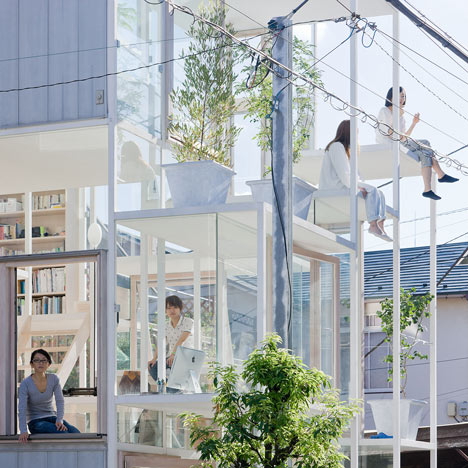
House NA by Sou Fujimoto Architects
This Tokyo house by Japanese architect Sou Fujimoto has hardly any walls and looks like scaffolding (photos by Iwan Baan).
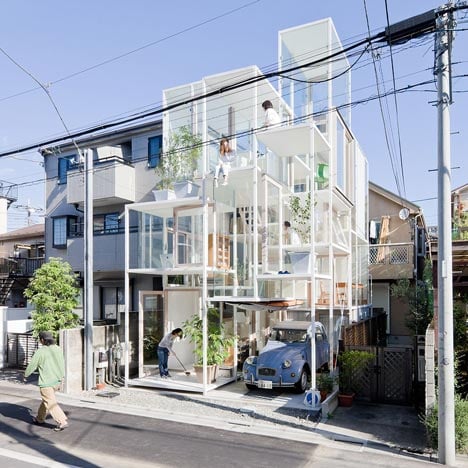
House NA has three storeys that are subdivided into many staggered platforms.
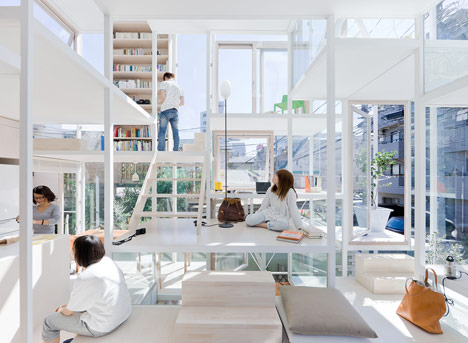
The few walls that do exist are mostly glass, making certain spaces secure without adding privacy.
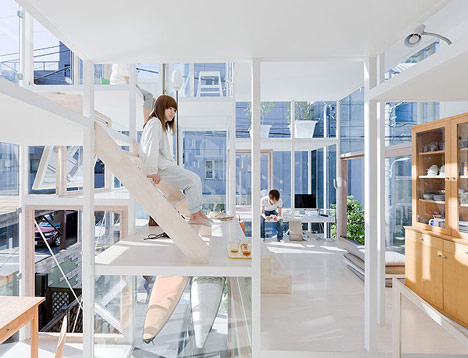
See more projects by Sou Fujimoto here, including a stack of four house-shaped apartments.
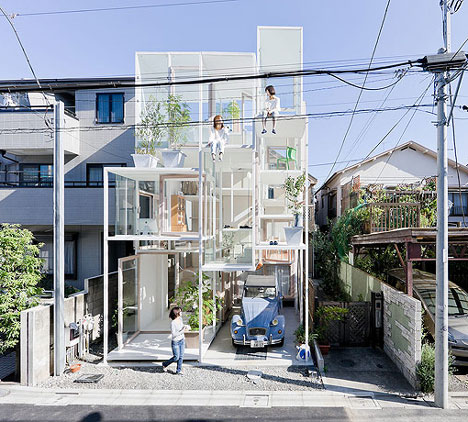
See more images of this project on the photographer's website.
Here's some more information from the architects:
House like a single Tree
House standing within a residential district in central Tokyo.
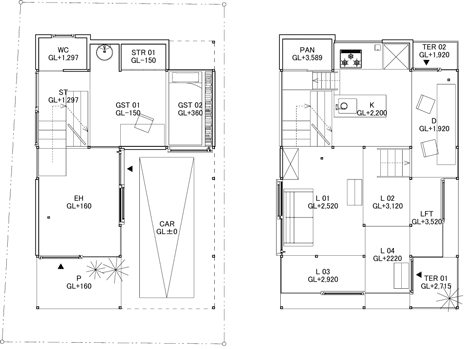
To dwell in a house, amongst the dense urbanity of small houses and structures can be associated to living within a tree. Tree has many branches, all being a setting for a place, and a source of activities of diverse scales.
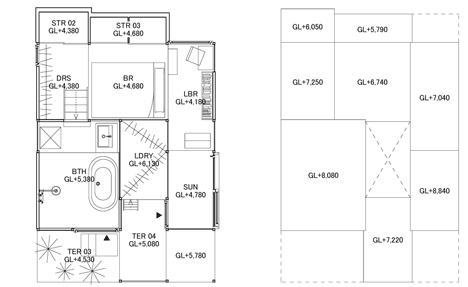
The intriguing point of a tree is that these places are not hermetically isolated but are connected to one another in its unique relativity. To hear one's voice from across and above, hopping over to another branch, a discussion taking place across branches by members from separate branches. These are some of the moments of richness encountered through such spatially dense living.
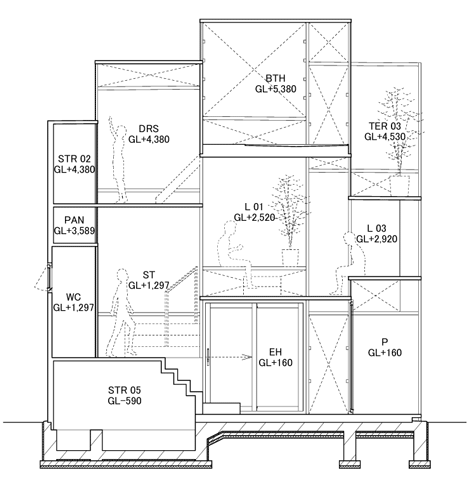
By stratifying floor plates almost furniture-like in scale, throughout the space, this house proposes living quarters orchestrated by its spatio-temporal relativity with one another, akin to a tree. The house can be considered a large single-room, and, if each floor is understood as rooms, it can equally be said that the house is a mansion of multifarious rooms. A unity of separation and coherence.
Elements from furniture scales come together to collectively form scale of rooms, and further unto those of dwellings, of which renders the city.
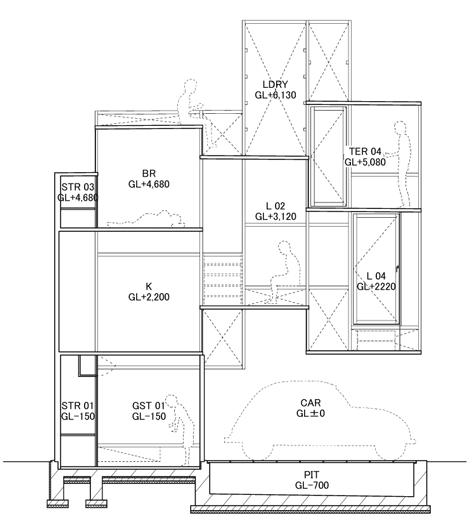
The steps between the plates at times will become seating and desks, at times as a device segmenting a territory, and at times each akin to leaves of the foliage filtering light down into the space.
Providing intimacy for when two individuals chooses to be close to one another, or for a place afar still sharing each other's being. For when accommodating a group of guests, the distribution of people across the entire house will form a platform for a network type communication in space.
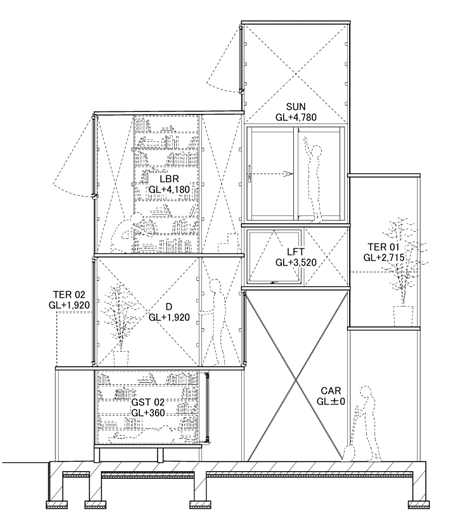
The white steel-frame structure itself shares no resemblance to a tree.
Yet the life lived and the moments experienced in this space is a contemporary adaptation of the richness once experienced by the ancient predecessors from the time when they inhabited trees. Such is an existence between city, architecture, furniture and the body, and is equally between nature and artificiality.